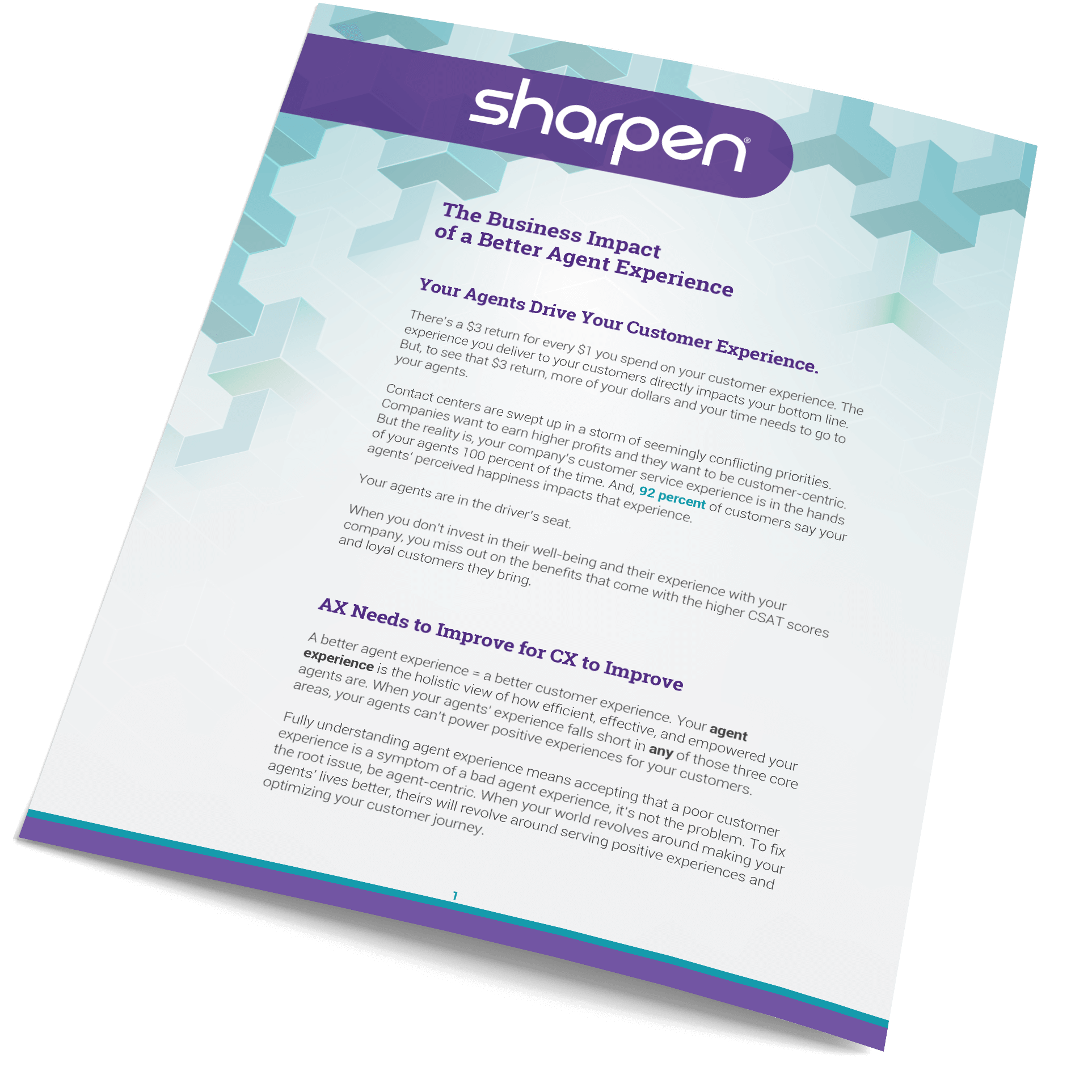10 Contact Center Coaching Methods that Work: Improve Agent Performance by Building Trust and Developing your Team
Your agents quit their jobs when they don’t get the coaching they need.
Gallup found that managers control 75% of the reasons employees leave their jobs. Factors like no career advancement opportunities, guarded management styles, and poor expectation setting makes your agents run for the door.
That means if you’re running a contact center with a team of 20 agents, you have the power to save 15 of those agents from dumping the contents of their desk drawers into a cardboard box, grabbing their freshly-potted desk plant, and leaving for good.
Your job as a manager, and a coach, is to bring out your agents’ highest potential. But that means something different for each agent. Sometimes you’ll grow agents to move through the ranks of your contact center, and other times you’ll find out agents would be a better fit in a different part of your company (or elsewhere).
Career paths look different, and how agents approach their work each day is different. It’s up to you to create a positive environment for your team and to make sure their roles are tailored to them and how they work. Putting in the effort to create an effective onboarding plan and continued engagement in employees is essential in your contact center. Gallup notes that in order to improve employee engagement and growth, clarity in communication can make all the difference.
We’ve come up with a few ways (and examples) to help you coach better in your contact center. Check them out and spin them into something new to shake up your contact center coaching methods.
10 Methods for Better Contact Center Coaching
1. Hold a productive 1:1.
Have a standing appointment weekly, bi-monthly, or monthly for meetings with each of your team members – and let your agents drive the conversation.
Over 200 managers were asked the question “Who owns the one-on-one meeting agenda?” Some 49% said they share the responsibility with their direct report.
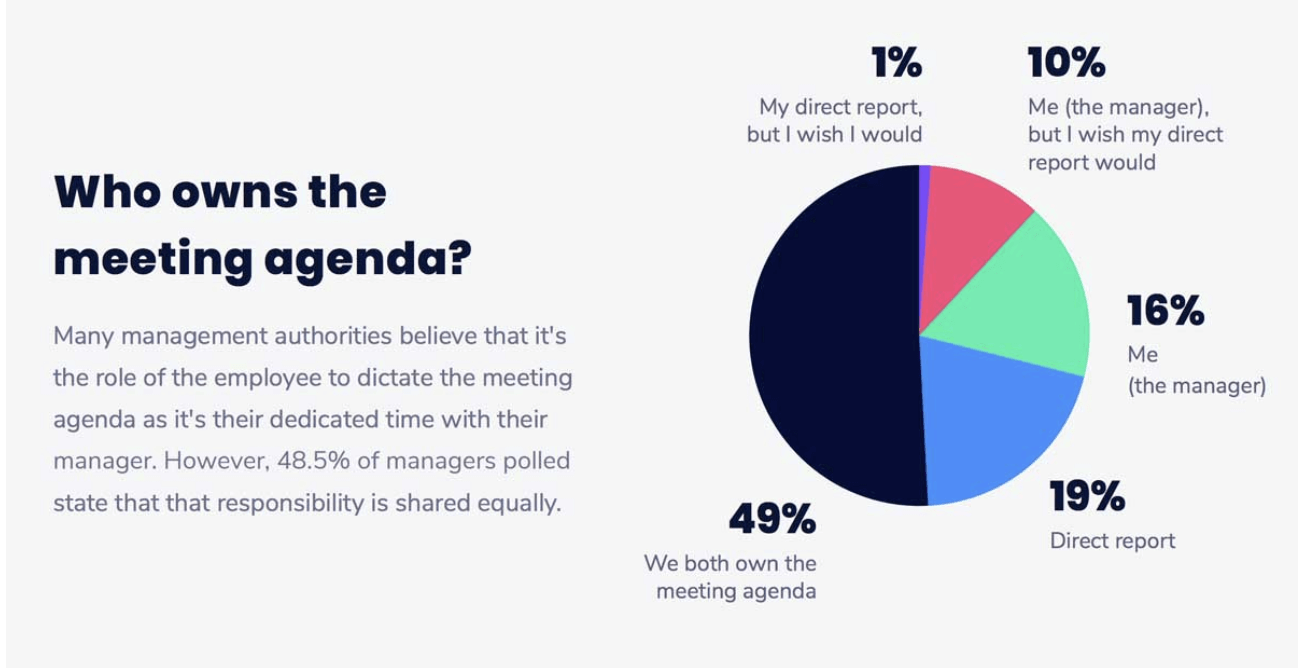
While both managers and agents (or supervisors and agents) contribute to the conversation, treat 1:1s as an employee’s time and space to share what’s on their mind. It’s a time for your agents to bring concerns or questions to the table and to talk about where they need help.
[Read Next] 16 questions you should be asking employees during your 1:1s to encourage agent retention
Optimize the meeting invite before each convo, so agents have regular reminders on what to think up before coming to the meeting. Use time blocking to guide the meeting, but don’t worry too much about going outside the lines. As long as your agents hit all the points you need to cover, let the conversation flow organically.
2. Lead team meetings.
Come prepared and give your team time to prep. Set expectations up front, so your agents know what the meeting’s about and what takeaways they should leave with. Create an agenda with the topics to talk about, the reason for discussing them, and who will lead each topic discussion. Designate a note taker and email the notes to your team after the fact.
Here’s how you can set-up a quick, actionable agenda for your team meeting:
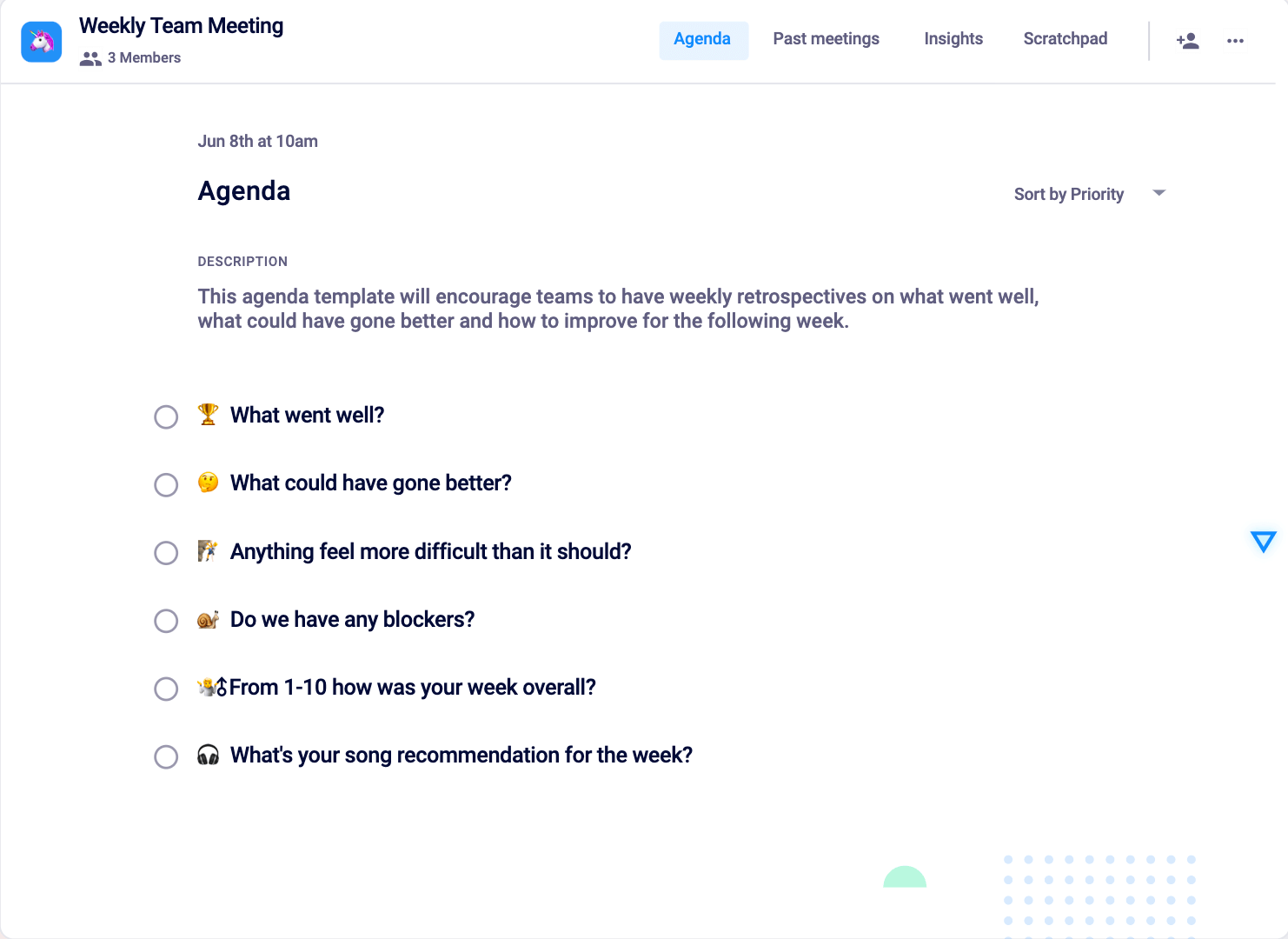
3. Shift your language and stay away from negative words.
Certain cringe-worthy words raise stress levels in your contact center. When you use words with negative connotations, it puts agents on the defense – even when they’ve done nothing wrong.
[Read Next] Learn how to rally your remote team around your company values to boost morale when working from home
Be aware of how your words affect your agents, and shift your language to be more constructive and positive. Even when you have to talk about ways your agents can improve, be tactful about the words you choose. Below are three examples of simple word changes you can make to operate a less-stressed zone.
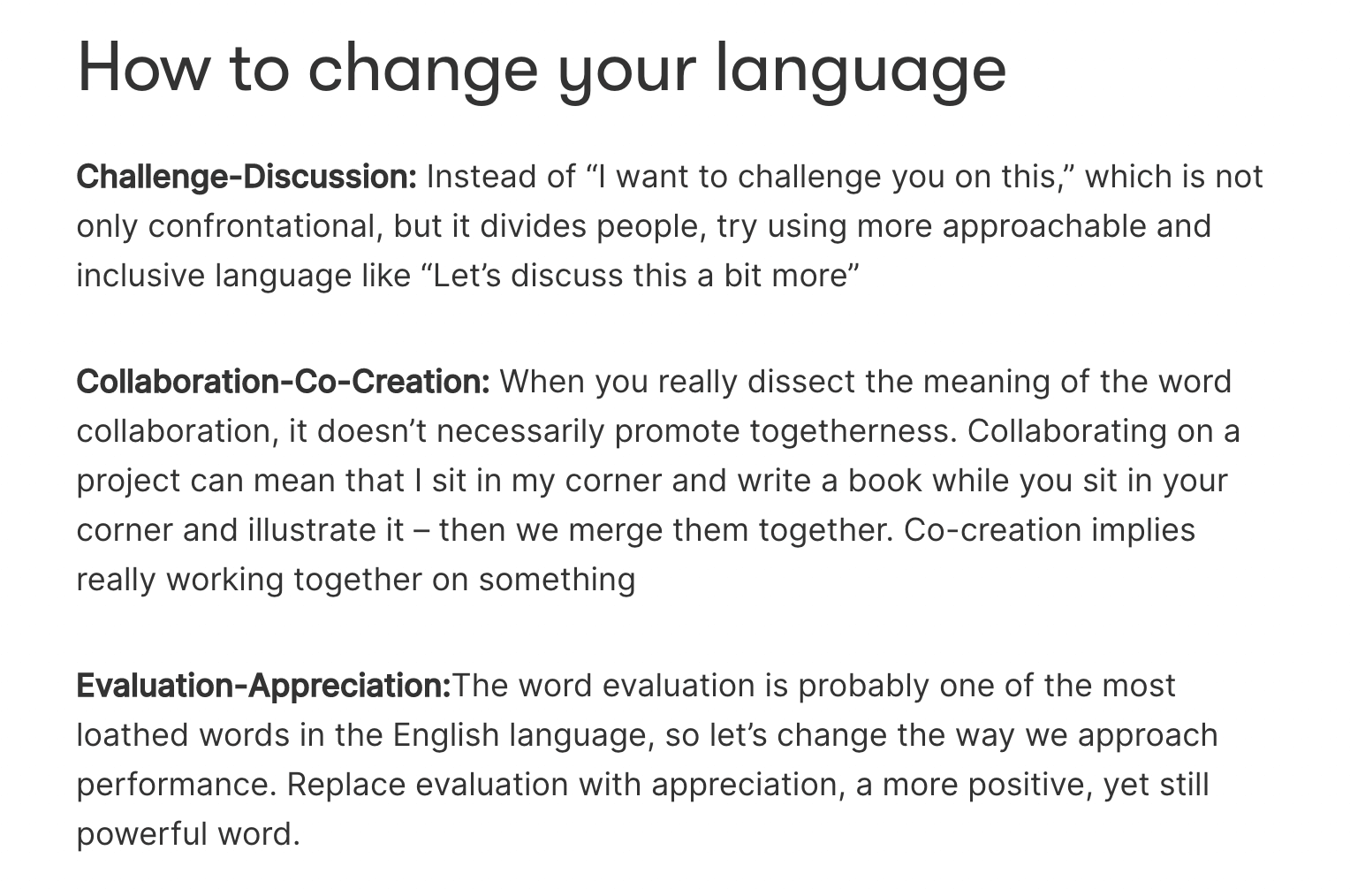
4. Share your mission statement and core values with your team.
Employees work better and are happier with their jobs when they work toward a common cause. And, having compelling brand values that back your mission and vision is one of the four core competencies of a standout customer experience.
Use your company mission statement and core values to create a contact center mission statement of your own. It builds team unity and creates a central point to focus your goals. Your mission statement should be one to two sentences that describe your WHY. Are you trying to outshine Joey Chestnut and eat the most hot dogs in the world? Or, are you dedicated to saving all the puppies and kittens who don’t have homes? Figure out your team’s driving force and how it relates to company-wide goals, then write it in 30 words or less.
Next, ID the core values you’ll put to work in your contact center to help you accomplish your mission. Values can be things like customer commitment and quality, or integrity and teamwork.
Take a look at Patagonia’s famous mission statement for inspiration:
Patagonia: Build the best product, cause no unnecessary harm, use business to inspire and implement solutions to the environmental crisis.
Patagonia tied their values into their mission to make one central statement for their company goals.
5. Have go-to goals and career questions on hand.
Have a set of career questions and goal ideations ready for your agents, so when the time comes for in-depth conversations, you’re prepared to get them thinking about their futures.
Map out possible paths to management, higher-level roles, or even out of the team if that’s what some agents prefer. Come up with realistic timelines and tasks agents can complete to get where they want to be. Here’s a list from Inc Magazine of 100 questions you can use to get agents to consider what they really want out of their careers. Pick and choose a few of your favorites.
6. Have more than one performance conversation.
We’ve talked about the 1:1, and we all know about the highly anticipated (and often dreaded) annual performance review. But, to be the most effective coach you can be, there are four types of performance conversations you need to have.
Mix up your formats and space out your conversations to get to know your agents and the way they work. You can still have formal conversations where you bring performance data to the table, but adding quicker, less formal conversations into the mix will ensure agents know what’s coming in future conversations. What we really dread is the unknown, so get rid of the unknown. Tell agents where they stand regularly.
Here are the types of conversations you need to have with agents:
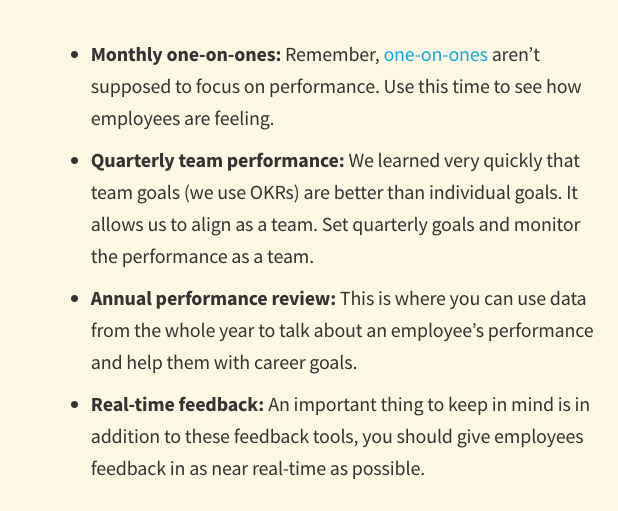
7. Create a visual board for your team goals.
Use visualization to help your agents keep their eyes on your important goals (literally). Put a whiteboard or a digital board in a common area for your team and map out your monthly goals. Then, continuously update those goals as you make progress each week. Moz uses whiteboards to map out topics and metrics related to their subject matter.
Here’s an example whiteboard they shared based on personalized goals:

And, one of our favorite contact center coaching methods is using separate wallboards and digital dashboards to show your team how they’re tracking toward their goals, too. Displaying metrics for your team to see lets agents watch their progress and autocorrect when KPIs trend low. Plus, studies show contact centers with digital wallboards improve the chances of agent burnout. Agents at severe risk for burnout are 63% less likely to have visibility into their metrics.
8. Use the radical candor approach to leadership.
Kim Scott’s radical candor approach to leadership is all about being clear and candid with feedback and being a better coach for your team. The three main points of radical candor are to: create a culture of feedback, help the people on your team achieve their fullest potential, and drive results collaboratively. You are at the center of your team’s world when they’re at work, so you have to lead the charge to change the culture of your contact center.
This is what radical candor looks like:
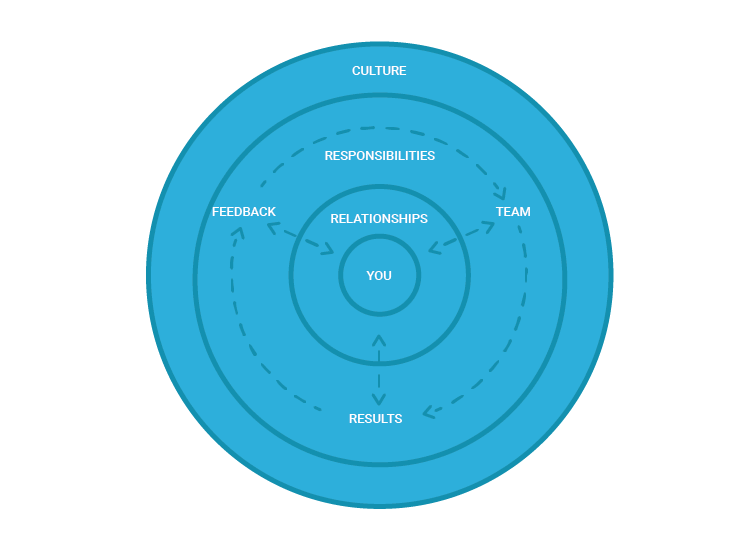
(Hint: notice the circle would be more like a donut with a giant hole to fill if you weren’t a part of it).
9. Practice giving HIP feedback.
No, we don’t mean hip, like funky and fresh.
HIP feedback is feedback that’s:
-
- Humble
-
- Helpful
-
- Immediate
-
- In-person,
-
- Private criticism/Public praise,
-
- Not about Personality.
Giving HIP feedback is what helps you build a culture where feedback is expected and encouraged, and where you lead with radical candor. It’s all about being kind even when you have to criticize, about praising more often, and about coaching in a way that’s actionable and relevant for your agents.
[Read Next] Use performance data to back more actionable and relevant feedback in each coaching session with your agent.
10. Give your agents a set of questions they can ask you in 1:1s.
Give agents the opportunity to ask you questions in 1:1s upfront, but know that many of them won’t come up with questions or feedback for you on the spot. Set the expectation before meetings that you’ll ask for feedback. And, email your agents a list of potential questions they can ask in advance.
Some will read straight from the list you give them, and others will take your suggestions and craft them into their own. Either way, prepped questions will spark deeper conversations to help you get to know the people on your team. Here’s a list of example questions you can pass along.
Whew! That was a ton of information. We’ll leave you with one, summed-up takeaway, so you can get back to your priorities. Put these contact center coaching methods to work to give your agents actionable and relevant feedback, personalize your training, and coach agents every single day (even if you only give each team member a few minutes of feedback per day).
[Bonus Resource] Jump to Your Call Center Manager Playbook with go-to tips to improve your contact center coaching methods.
We originally published this post on September 20, 2018, and we updated it for new insight on June 3, 2021.


